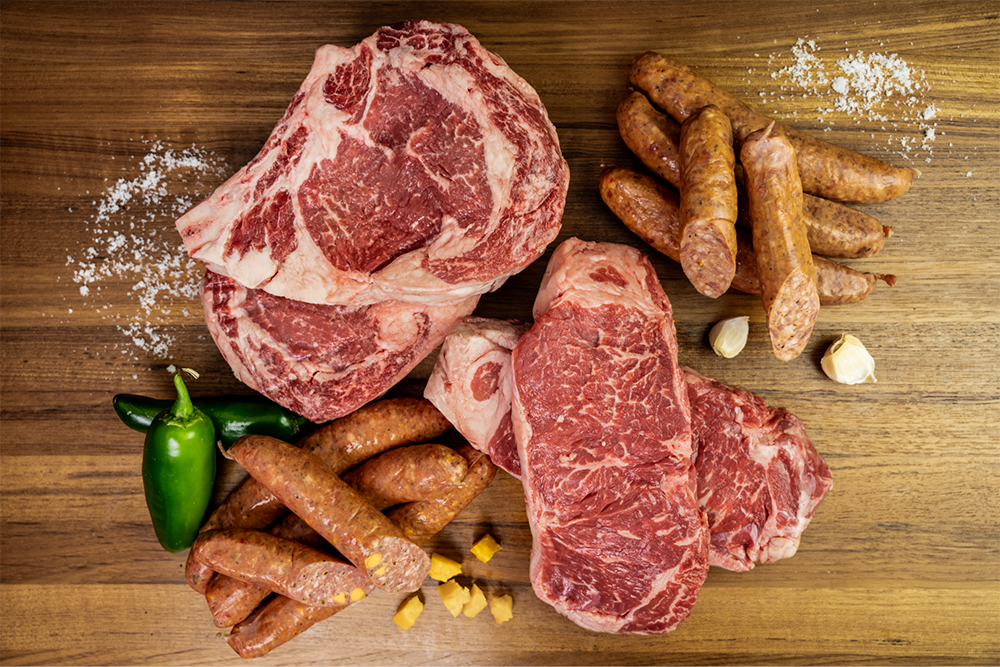Bagley Farms Meat Market Edwardsville IL: Your Relied On Resource for High-Quality Meats
Bagley Farms Meat Market Edwardsville IL: Your Relied On Resource for High-Quality Meats
Blog Article
Reveal the Art of the Butcher's Cut in a Modern Meat Market
In the ever-evolving landscape of modern meat markets, the butcher's cut has actually transcended its conventional origins, combining age-old workmanship with contemporary techniques. What genuinely sets the contemporary butcher apart is their capacity to build a deeper connection in between consumers and the origins of their meat.
Evolution of Butchery Techniques

The mid-20th century saw butchery strategies further fine-tuned by clinical understandings right into muscle biology and meat aging, enhancing both tenderness and taste. Technologies like vacuum product packaging and refrigeration extended item shelf-life, enabling butchers to diversify offerings and improve quality assurance. This duration also marked the increase of specific devices, such as band saws and meat slicers, which increased precision and effectiveness in meat handling.
The 21st century has presented digital modern technology into the butchery realm. Computerized systems now aid in tracking pet provenance and optimizing cuts to fulfill specific customer preferences. In addition, a renewal in artisanal butchery has actually emerged, mixing conventional abilities with contemporary knowledge to deal with consumers looking for honest and sustainable meat alternatives. This evolution emphasizes a dynamic interaction between custom and technology, meeting modern demands while protecting the craft's heritage.

Recognizing Meat Cuts

Comprehending the ins and outs of meat cuts is essential for both butchers and customers looking for top quality and worth. Each cut originates from a different part of the animal, presenting distinct flavors, textures, and cooking methods. Proficiency of these differences not only improves cooking experiences but additionally takes full advantage of the energy of each carcass. For butchers, exact cuts reflect ability and respect for the craft, guaranteeing marginal waste and optimum yield.
The key classifications of meat cuts include primal, sub-primal, and retail cuts. Butchers after that break these down additionally into sub-primal cuts, before finally creating retail cuts offered to customers, like ribeye or tenderloin.
Comprehending muscle mass composition is important; muscular tissues used a lot more frequently by the animal tend to be harder and are best suited for sluggish food preparation approaches, while less-used muscles, like those discovered in the loin, are extra tender and ideal for cooking or roasting. Experience with these differences empowers consumers to make educated choices, improving their cooking undertakings.
Picking Top Quality Meat
Choosing the right meat entails even more than simply picking a visually attractive piece from the screen. The art of picking i loved this top quality meat needs a discerning eye and understanding of specific qualities that represent freshness and excellence.
Second of all, think about the marbling, which describes the white streaks of fat within the muscle. Appropriate marbling is a vital indicator of inflammation and flavor, as it thaws throughout cooking, enhancing the meat's juiciness. Remember, greater marbling usually associates with superior quality cuts, such as USDA Prime.
Structure is another essential factor; meat should feel strong to the touch, not slimy or excessively soft. In addition, bear in mind the fragrance. Fresh meat must have a tidy, neutral smell, without any kind of sour or off-putting odors.
Pairing Cuts With Cooking Techniques
Successfully coupling cuts of meat with the ideal cooking approaches is vital for achieving ideal taste and appearance. Different cuts vary in inflammation, marbling, and connective cells web content, each calling for details methods to unlock their possibility. For instance, tender cuts like filet mignon and ribeye, with their fundamental marbling, advantage from high-heat, quick-cooking approaches such as cooking or pan-searing. These methods enhance the meat's all-natural tastes and make sure a juicy surface.
On the other hand, tougher cuts like brisket and chuck roast are rich in collagen, which breaks down right into gelatin next when prepared slowly. These cuts are optimal for braising or slow-moving roasting, enabling the meat to tenderize with time and develop deep, complex flavors. Cuts such as short ribs and pork shoulder fare well with slow-cooking techniques, where prolonged cooking times change their durable structures right into succulent dishes.
Lamb shanks and oxtail, which call for extended cooking to tenderize, are ideal candidates for cooking or sluggish simmering. These methods coax out abundant, passionate flavors while maintaining dampness. By recognizing the special characteristics of each cut, cooks and home cooks alike can raise their cooking creations, making certain each recipe is both pleasing and remarkable.
The Butcher's Duty Today
Navigating the progressing landscape of the modern-day meat market, the more information butcher's duty today prolongs past simple prep work of cuts. Contemporary butchers are culinary craftsmens, teachers, and supporters for sustainable techniques. They connect the space between the farm and the fork by making certain ethical sourcing, recognizing pet husbandry, and prioritizing transparency in the supply chain. This change shows the expanding consumer demand for quality over amount, where provenance and animal welfare are vital.
In addition to crafting exact cuts, butchers currently engage straight with consumers, supplying cooking guidance and customizing selections to fit private needs and choices. Their competence in meat aging, marbling, and taste profiles equips consumers to make educated decisions, boosting their culinary experiences. This personalized service exemplifies the butcher's progressing duty as a relied on advisor in the cooking area.
In addition, butchers are essential in lessening waste, using whole animals to produce diverse products such as sausages and stocks - bagley farms meat market edwardsville il. This thorough technique not only respects the pet however likewise straightens with contemporary sustainability objectives. By doing this, the modern butcher personifies both practice and advancement, adapting to an ever-changing market while preserving the artistry and stability of their craft

Verdict
Proficiency in recognizing diverse meat cuts and top quality indications empowers butchers to provide enlightened recommendations, lining up certain cuts with optimum cooking methods. By recognizing historic techniques while embracing modern needs, the butcher's duty continues to be essential in today's sophisticated meat market.
Report this page